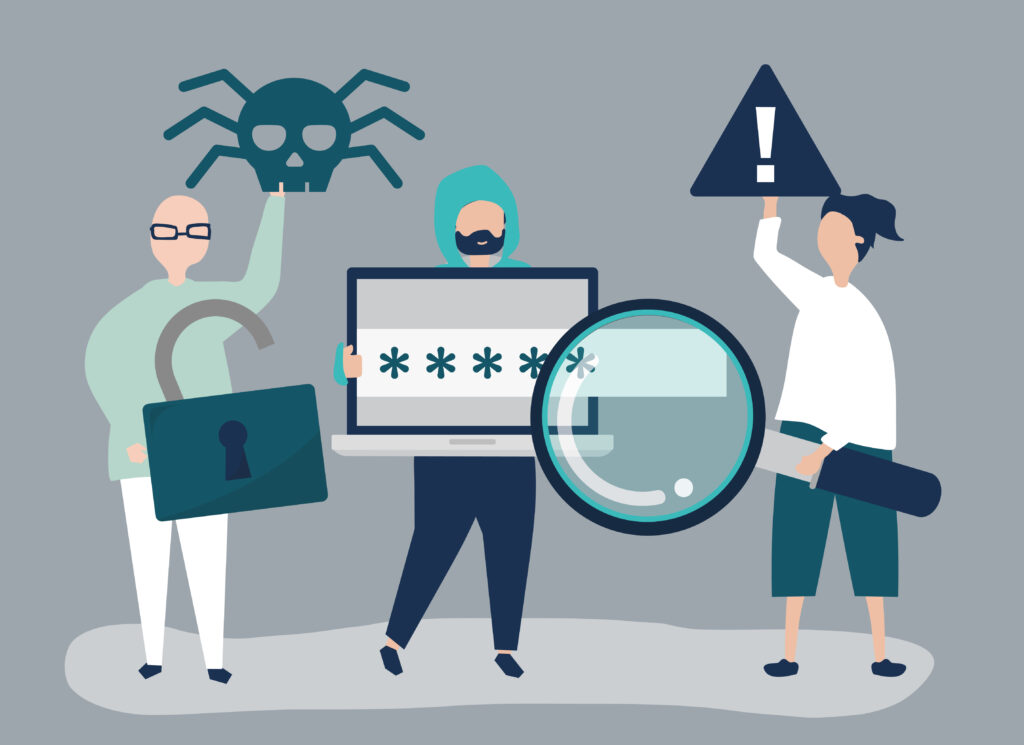Cyber threats are a constant worry for businesses of all sizes. Malicious actors are like cunning wolves, always searching for weaknesses to exploit in your IT systems. This is where data management comes in, but with a cybersecurity twist Regular vulnerability assessments are your armor against these digital dangers.
The landscape of cyber threats has become significantly more perilous 10 years ago. Back then, the reported number of vulnerabilities discovered annually was considerably lower. However, by 2023, this number skyrocketed to over 29,000, highlighting the ever-increasing need for vigilance.
Why Vulnerability Assessments Matter
Imagine your network as a medieval castle. A vulnerability assessment is like a thorough inspection, identifying any chinks in the armor – weaknesses attackers could exploit to steal data, disrupt operations, or launch ransomware attacks. Here’s why these assessments are crucial:
- Unseen Threats: Many vulnerabilities lurk hidden within complex IT systems. Regular vulnerability assessments uncover these before they become a security breach.
- Evolving Threats: New vulnerabilities emerge all the time. Regular assessments ensure your systems are patched and protected against the latest dangers.
- Compliance: Many industries have regulations requiring regular vulnerability assessments. This helps ensure data security and privacy compliance.
- Proactive vs. Reactive: Identifying vulnerabilities proactively allows for timely fixes, minimizing the risk of a costly security breach. Don’t wait until after an attack to scramble for solutions!
The High Cost of Skipping Vulnerability Assessments
Some businesses might view vulnerability assessments as an unnecessary expense. However, the cost of neglecting them can be far greater:
- Data Breaches: Unidentified vulnerabilities expose your systems to attacks. Just one breach can result in stolen data, hefty fines, and lost revenue. The average data breach cost is a staggering $4.45 million!
- Reputational Damage: A security breach can severely damage your company’s reputation, eroding customer trust and hindering future business prospects.
- Loss of Competitive Advantage: Cyberattacks can cripple your ability to innovate and compete effectively. Don’t let security concerns slow down your business growth.
The Benefits of Regular Vulnerability Assessments
Regular vulnerability assessments are an investment in your business’s security:
- Improved Security Posture: By identifying and addressing vulnerabilities, you significantly reduce the attack surface for potential cyber threats.
- Enhanced Compliance: Regular assessments help you stay compliant with relevant industry regulations and data privacy laws.
- Peace of Mind: Knowing your network is secure gives you peace of mind to focus on core business operations.
- Reduced Risk of Breaches: Proactive vulnerability management helps prevent costly data breaches and associated financial repercussions.
- Improved Decision-Making: Assessments provide valuable insights into your security posture, enabling data-driven decisions about security investments.
The Vulnerability Assessment Process: A Step-by-Step Guide
A vulnerability assessment typically involves several key steps:
- Planning and Scoping: Define what systems and applications will be evaluated.
- Discovery and Identification: Specialized tools scan your IT infrastructure for known vulnerabilities.
- Prioritization and Risk Assessment: Classify vulnerabilities based on severity and potential impact. Focus on critical ones that need immediate remediation.
- Remediation and Reporting: Develop a plan to address identified vulnerabilities, including patching, configuration changes, and security updates. Generate a report outlining the findings, risk levels, and remediation steps taken.
Beyond the Basics: Advanced Vulnerability Assessment Techniques
While a standard vulnerability assessment is a powerful tool, there are additional techniques you can leverage for a more comprehensive evaluation:
- Penetration Testing (Pen Testing): This simulates a real-world cyberattack, where ethical hackers attempt to exploit vulnerabilities in your systems. Pen testing goes beyond identifying weaknesses; it reveals how attackers might use them and the potential impact on your business.
- Social Engineering Assessments: These assessments evaluate your employees’ susceptibility to social engineering attacks, a common tactic where attackers manipulate people into divulging sensitive information or granting access to systems.
- Wireless Network Assessments: These assessments focus on identifying vulnerabilities in your Wi-Fi networks. Unsecured wireless networks are a prime target for attackers, allowing them to intercept sensitive data or launch man-in-the-middle attacks.
- Cloud Security Assessments: If your business utilizes cloud-based applications or storage, a cloud security assessment can identify vulnerabilities within those environments.
Who Should Conduct Vulnerability Assessments?
There are two main options for conducting vulnerability assessments:
- Internal IT Security Team: If your organization has a dedicated IT security team with the necessary expertise, they can potentially handle vulnerability assessments internally. However, this requires ongoing training and access to specialized tools.
- External Security Vendor: Many IT security companies offer vulnerability assessment services. This can be a good option for businesses that lack the internal resources or expertise to conduct assessments themselves. External vendors can also provide valuable insights and recommendations based on their experience with a wide range of security threats.
Maintaining a Strong Security Posture
Vulnerability assessments are just one piece of the cybersecurity puzzle. Here are some additional steps you can take to maintain a strong security posture:
- Implement a Security Awareness Program: Educate your employees about cybersecurity best practices, including how to identify and avoid phishing attempts and other social engineering tactics.
- Patch Management: Develop a system for keeping your software and operating systems up-to-date with the latest security patches.
- Strong Password Policies: Enforce strong password policies for all user accounts and encourage the use of multi-factor authentication (MFA) for added security.
- Regular Backups: Maintain regular backups of your critical data. This ensures you can recover your data quickly in the event of a cyberattack.
- Incident Response Plan: Develop a plan for how to respond to a security incident, including steps for containing the breach, notifying authorities, and recovering data.
Investing in Security is Investing in Your Future
Vulnerability assessments are not a one-time fix. They should be conducted regularly to maintain a strong cybersecurity posture. By proactively identifying and addressing vulnerabilities, you can significantly reduce your risk of cyberattacks, protect sensitive data, and ensure business continuity.
Don’t Gamble with Your Business Security
Remember, cybersecurity is an ongoing battle. Vulnerability assessments are a vital weapon in your arsenal. Contact 911 Pc Help today to schedule a vulnerability assessment and safeguard your valuable assets. Our team of IT experts can help you identify and address any weaknesses in your infrastructure, providing actionable recommendations for a more secure future.


